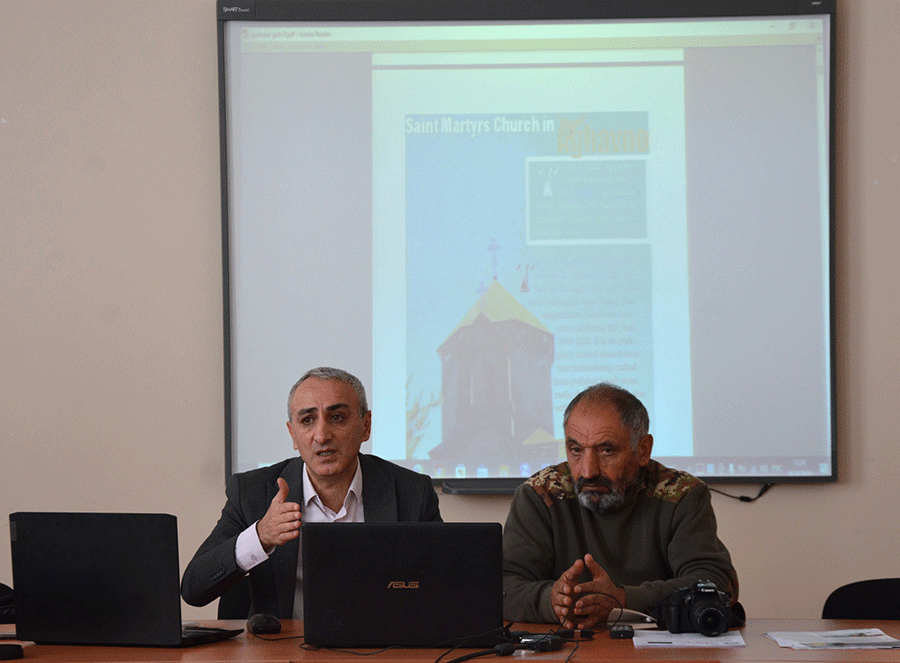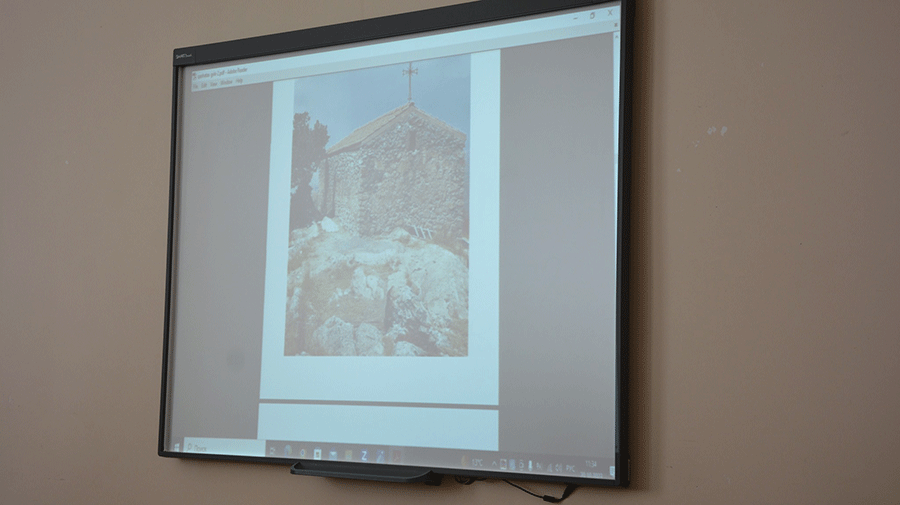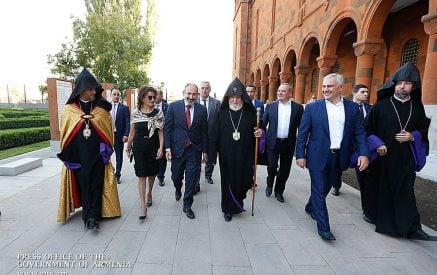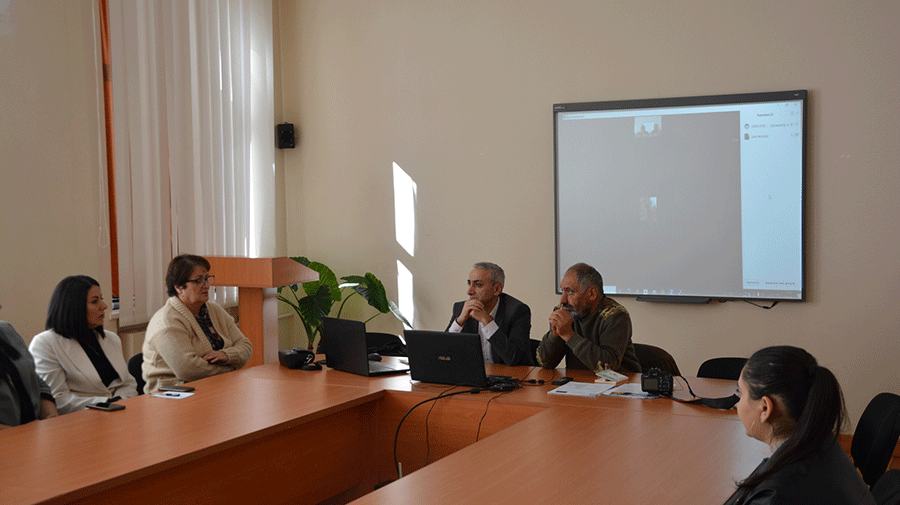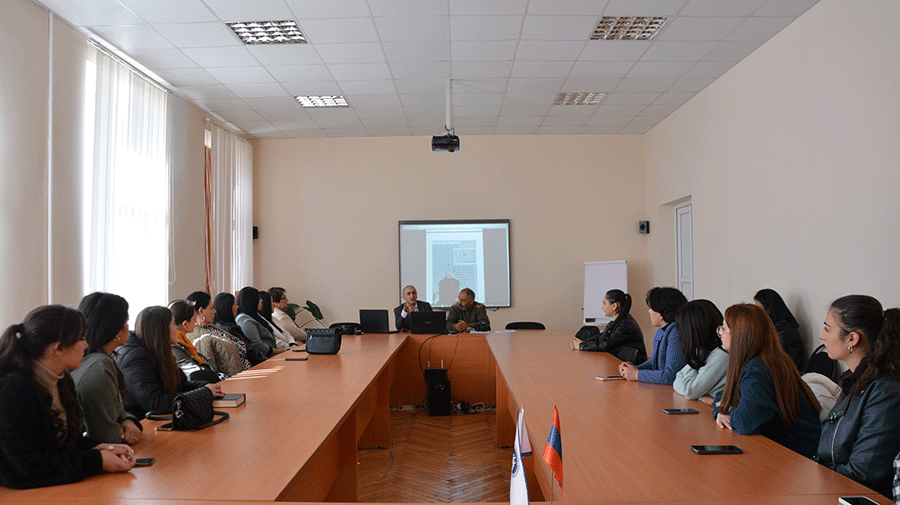The book album “The Historical and Cultural Heritage of the Nagorno-Karabakh Conflict Zone” will be published in English at the end of this year.It was authored by the candidate of philological sciences, associate professor Mher Kumunts, and pedagogue-journalist Zohrab Yrkoyan, a participant in the Artsakh war.
The book was approved in the grant competition announced by the Ministry of Education, Science, Culture and Sports and will be published with the grant funds. Before the publication, on October 20, at Goris State University, the co-authors of the book briefly presented the content of the book.
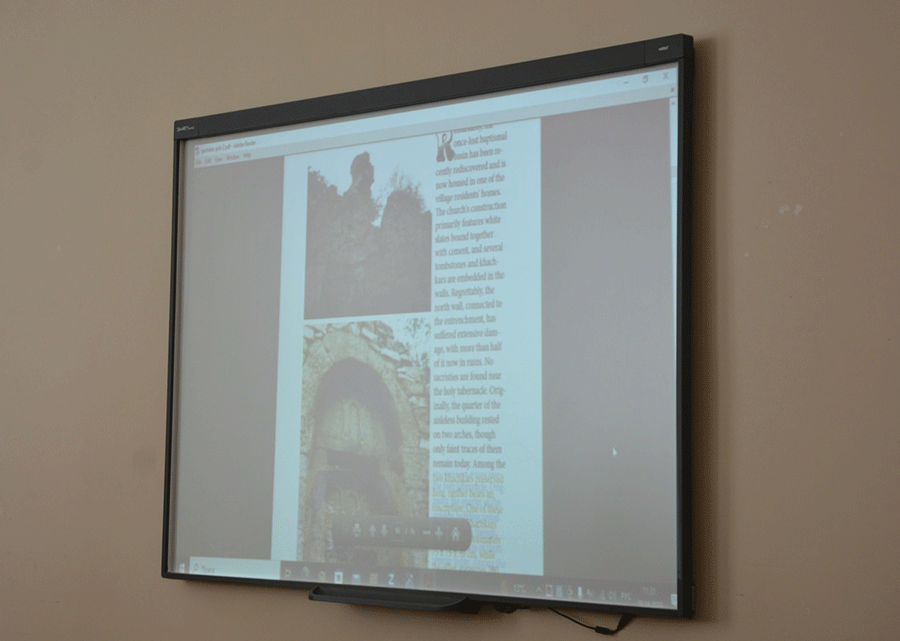
According to Mher Kumunts, the book tells about the preserved Armenian monasteries, churches, chapels, fortresses, bridges, springs, and Armenian historians in the historic settlements of the Kashatagh region and their vicinity.
Read also
The historical role of Artsakh and the region, in general, has been made public at a certain level among Armenian readers; the time has come to generalize the existing results, to go beyond the narrow boundaries of the readers, and to internationalize the historical role of the region,” said Mher Kumunts.
According to him, the book-album will be helpful for Armenian and pro-Armenian diplomatic institutes, the internationalization of the eastern part of Armenian culture, and the non-Armenian speaking public Zohrab Yrkoyan talked about the history and problems of studying preserved and existing historical monuments in the territory of the Kashatagh region. “A homeland that was depopulated after the 18th century and was liberated and revived at the end of 1993 was Kashatagh, a part of the Syunik and Artsakh worlds of the historical Great Hayk.
From 1993 to 2020, it was possible to study the area’s historical, architectural, and cultural monuments in-depth, confirming that the Kashatagh region, part of the Republic of Artsakh, has been an Armenian country for thousands of years. Although the area remained in captivity for about 250 years, the monuments left by our grandfathers were destroyed and destroyed, and many khachkars and tombstones with Armenian inscriptions were still preserved. Nearly four dozen churches and chapels were still standing, some altogether and half-destroyed, with only walls and foundations. All these remain in captivity today, and their fate is unknown,” said Zohrab Yrkoyan.
Armen DAVTYAN




















































